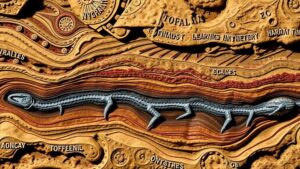Mapping Lost Gold Rush Staging Areas for Hidden Mining Equipment
Mapping Lost Gold Rush Staging Areas for Hidden Mining Equipment
The Gold Rush era, particularly the California Gold Rush of 1848-1855, was marked by a massive influx of settlers and prospectors seeking fortune. As these individuals traversed to mining sites, they established staging areas, temporary camps, and routes that facilitated their journey. Unfortunately, many of these historical locations have since been lost, resulting in the obscuring of valuable artifacts and mining equipment. This article explores methodologies and technologies for mapping these lost staging areas to recover hidden mining equipment, thereby preserving historical artifacts and enriching our understanding of the Gold Rush period.
Historical Context of the Gold Rush
The California Gold Rush began following the discovery of gold at Sutter’s Mill in January 1848. By the end of the rush, approximately 300,000 people had made their way to California. Most arrived via well-trodden routes, including the Oregon Trail and the Overland Trail, while staging areas provided the necessary resources for rest and recovery before continuing their journey.
- Timeframe: 1848-1855
- Key Locations: Sites such as Sacramento, San Francisco, and the Sierra Nevada foothills.
Initially, these staging areas were often informal, consisting of tents and transient camps. Over time, they evolved into more established locations where supplies could be obtained. But, many of these areas have been forgotten, buried under vegetation and urban development.
Importance of Mapping Staging Areas
Mapping lost staging areas is significant for several reasons:
- Cultural Heritage: Recovering these areas can lead to the discovery of artifacts that provide insight into daily life during the Gold Rush.
- Historical Research: Understanding migration patterns and economic flow provides a broader view of the impact of the Gold Rush on American society.
- Environmental Insight: These sites often serve as indicators of the human impact on local ecosystems during a transformative period in U.S. history.
Methodologies for Mapping Lost Staging Areas
Various methodologies have been employed to locate and map lost staging areas. This section outlines some of the most effective approaches.
Historical Research
To accurately map lost areas, it is essential to begin with a thorough review of historical documents, newspapers, and mining records. For example, the California State Library houses a collection of diaries and accounts from miners detailing their routes and stops along the way. By analyzing these documents, researchers can create a preliminary map of potential staging areas.
Geospatial Technologies
The use of Geographic Information Systems (GIS) has transformed the ability to map historic staging areas. GIS allows researchers to overlay historical maps with contemporary geographical data to identify locations that may correspond with descriptions found in primary sources.
Plus, LiDAR (Light Detection and Ranging) technology can penetrate forest canopy and create high-resolution topographic maps. A study published in the journal Remote Sensing demonstrated that LiDAR was effective in revealing the remnants of old structures and pathways associated with 19th-century mining activities.
Ground-Penetrating Radar (GPR)
Ground-penetrating radar has become a crucial tool in archaeology for detecting subsurface artifacts without excavation. By utilizing GPR in suspected staging areas, researchers can identify anomalies that may indicate the presence of buried mining equipment or refuse piles.
Case Study: Analyzing Gold Rush Staging Areas in Nevada County
Nevada County, California, was a significant hub during the Gold Rush, and an ongoing research project has focused on locating lost staging areas. Historical research combined with GIS analysis revealed several potential sites correlating with miners logs from the late 1800s.
- Findings: The project identified specific locations where miners reported camp activities, which were later confirmed through LiDAR surveys revealing remnants of structures.
- Artifacts Discovered: Initial excavations have recovered mining tools, personal belongings, and remnants of the tents that once housed gold seekers.
Challenges in Locating Staging Areas
While the methodologies mentioned above are effective, several challenges can hinder successful mapping:
- Vegetation and Terrain: Overgrowth and rugged landscapes can obscure remaining evidence of staging areas, complicating efforts to map these sites.
- Site Degradation: Many potential locations have been subject to erosion, development, or vandalism, leading to the loss of significant historical evidence.
Conclusion: The Value of Recovering Gold Rush History
Mapping lost Gold Rush staging areas is not merely an archaeological endeavor; it serves to enrich our collective narrative of American history. The utilization of modern technology like GIS, GPR, and LiDAR provides powerful tools to unearth the past and recover not just mining equipment, but also stories of the individuals who ventured into unknown territories in search of wealth.
As further research continues, the potential to uncover more about the Gold Rush experience becomes increasingly attainable. By preserving these historical sights, we foster a deeper connection with our collective past while drawing lessons applicable to contemporary issues surrounding resource management and cultural heritage conservation.


